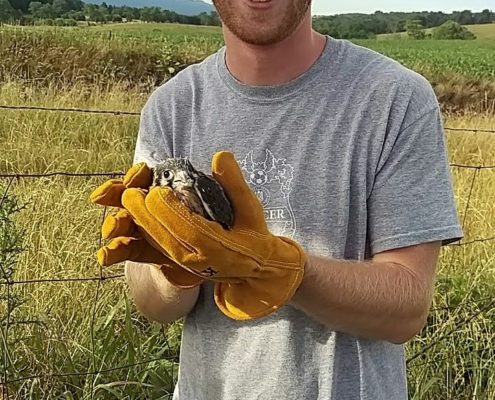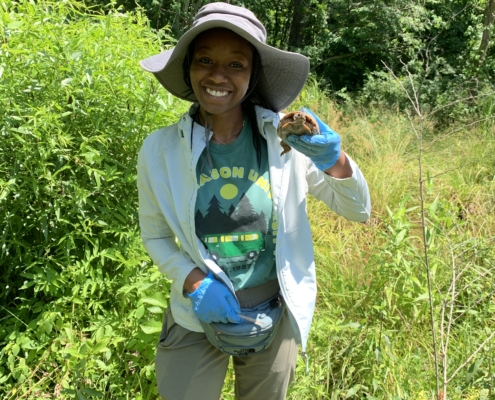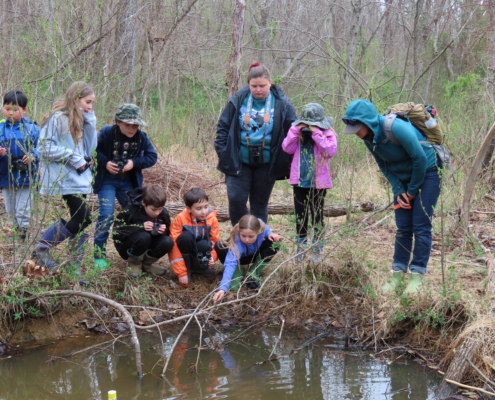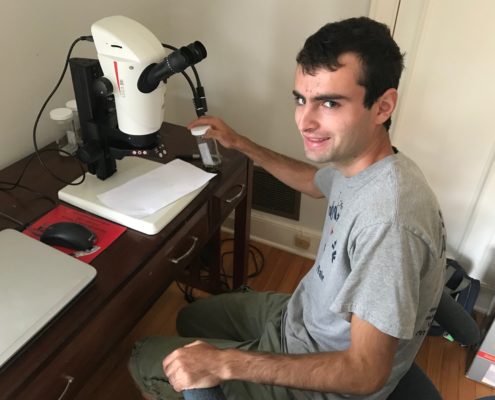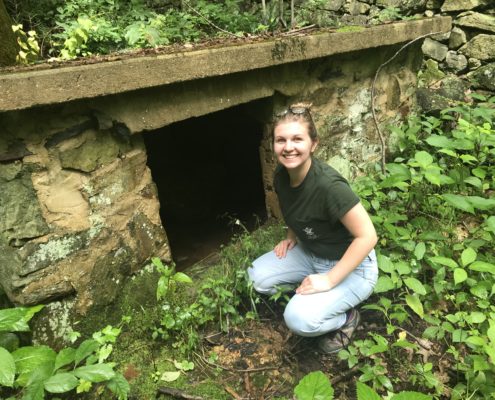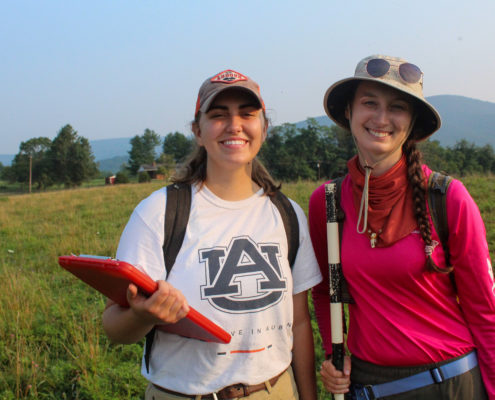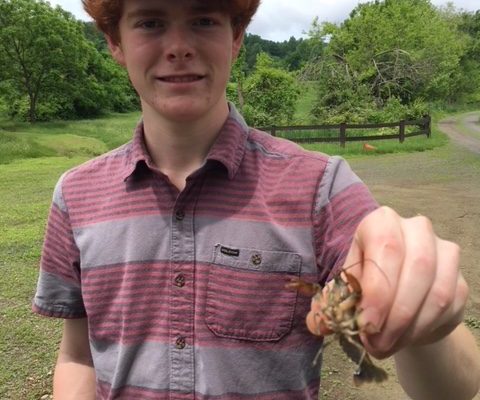If you are interested in volunteering for our organization, you can find upcoming volunteer days on our calendar here. You can select “Volunteer days” in the “Program type” menu to see upcoming dates. Fall and winter tend to be our busiest seasons for volunteering, with opportunities to remove invasive species, maintain trails, help conduct prescribed burns, and help with our native plant propagation. We rely on volunteers to help run our field trips. We usually run education volunteer training days in September and February and those days will be on our calendar about a month beforehand.
In addition to the paid positions on our employment page, we offer a small number of unpaid internships every season. We generally have fall (September through December), spring (January through May), and summer (June through August) intern positions available. Mentoring an intern is a big commitment. In order to give our small staff enough time to plan their schedules, we generally do not accept requests for internships less than six weeks before an internship would begin. We find internships to be most beneficial (for both the intern and our organization) if the intern can make a regular time commitment.
Below you can find projects that interns can participate in during each season. Please click the button below to be directed to an application form. We will reach out to offer an interview to selected candidates.
Middle and high school students who are interested in getting experience doing scientific research should check out our Young Scientists Research Experience.
Fall Internship Season (September to December)
Applications accepted June 1- August 15. We expect an intern participating in these projects to be able to commit to at least 8 hours a week for the fall season.
- Sorting insects: We have a freezer full of insect specimens collected in our native grassland restoration experiment that need to be sorted to order. This is a good opportunity to learn about identifying insects.
- American Kestrel videos: Since 2023 we have been collecting footage from cameras placed in American Kestrel nest boxes so that we can understand what kind of food parents are bringing to feed their offspring. An intern can watch and catalog these videos. We prefer an intern helping with this project to commit to at least 12 hours a week.
- Education intern: We can accept college students to help with our K-12 education programs. This may include helping run field trips, helping prepare educational materials, and monitoring the phenology trail and vernal pools that we visit with K-12 students. We prefer to work with students who have an interest in environmental education or field research.
- Land management: An intern can help our staff manage our 900-acre property. This may include removing invasive species, maintaining trails, and constructing small infrastructure projects.
Spring Internship Season (January to May)
Applications accepted September 15-December 31. We expect an intern participating in these projects to be able to commit to at least 8 hours a week for the spring season.
- Phenology trail: We have a phenology trail consisting of tagged trees that we are studying year after year to see how the timing of their life stages (budding, leafing, flowering, fruiting) is changing over time. A phenology trail intern would walk the trail at least one a week and record data about the trees. Data from this trail is submitted to the National Phenology Network through the platform Nature’s Notebook.
- Vernal pools: We need help monitoring the multiple vernal pools on our property. A vernal pool intern would be trained in how to identify the egg masses of different amphibians. This position requires walking uphill on steep muddy trails. This intern will need to be able to work independently.
- Land management: An intern can help our staff manage our 900-acre property. This may include removing invasive species, maintaining trails, and constructing small infrastructure projects. We grow native plants in two greenhouses and other areas to be planted in our restoration projects as well as to be distributed to local farmers and sold at our biannual plant sales. This intern may also periodically help water, weed, transplant, and generally maintain the plants that we are growing.
Summer Internship Season (May to August)
Applications accepted November 15-March 15. We expect an intern participating in these projects to be able to commit to at least 16 hours a week for the summer season; 24 hours a week is preferred. These positions are available from early May through late August, but start and end dates are flexible. We also understand that you may miss days or weeks for summer vacation or unforeseen circumstances.
- We can accept up to 3 interns to help with various research projects in the summer. In 2024 these projects will include studying the abundance of American Kestrel prey in different types of fields, tracking Eastern Box Turtles, and conducting plant surveys in our woodlands. Depending on the interns’ interests and schedules, an intern may be assigned to one of these projects or may be asked to help with multiple projects over the course of the week.
- Plant propagation: We grow native plants in two greenhouses and other areas to be planted in our restoration projects as well as to be distributed to local farmers and sold at our biannual plant sales. This intern would help water, weed, transplant, and generally maintain the plants that we are growing. We prefer a plant propagation intern to commit to 16 hours a week. We need consistent help with plant propagation throughout the week so we may not offer this position if we don’t get two or more interns who can cover five days a week.

